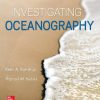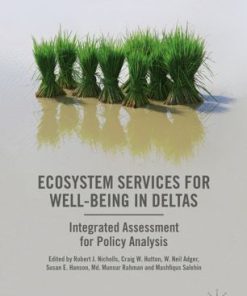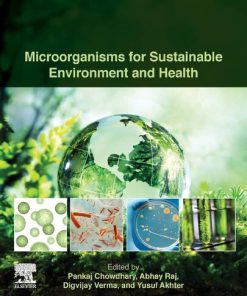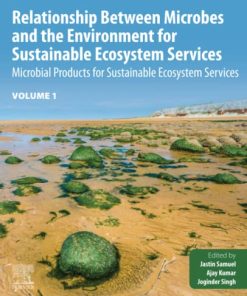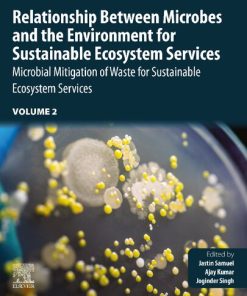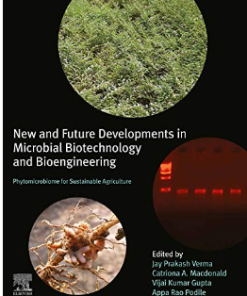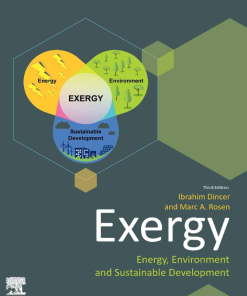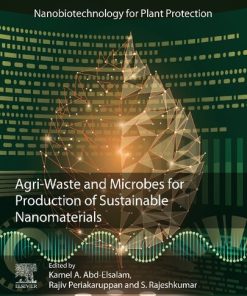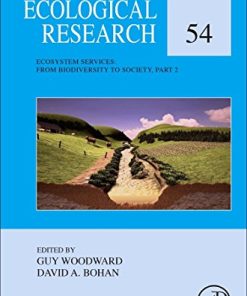(Ebook PDF) Relationship Between Microbes and the Environment for Sustainable Ecosystem Services Volume 3 Microbial Tools for Sustainable Ecosystem Services 1st edition by Jastin Samuel, Ajay Kumar, Joginder Singh 0323910661 9780323910668 full chapters
$50.00 Original price was: $50.00.$25.00Current price is: $25.00.
Relationship Between Microbes and the Environment for Sustainable Ecosystem Services, Volume 3: Microbial Tools for Sustainable Ecosystem Services 1st edition by Jastin Samuel – Ebook PDF Instant Download/DeliveryISBN: 0323910661, 9780323910668
Full download Relationship Between Microbes and the Environment for Sustainable Ecosystem Services, Volume 3: Microbial Tools for Sustainable Ecosystem Services 1st edition after payment.
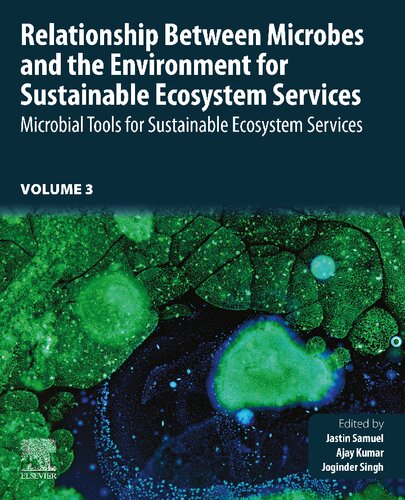
Product details:
ISBN-10 : 0323910661
ISBN-13 : 9780323910668
Author: Jastin Samuel, Ajay Kumar, Joginder Singh
Relationship Between Microbes and Environment for Sustainable Ecosystem Services, Volume Three: Microbial Tools for Sustainable Ecosystem Services promotes advances in sustainable solutions, value-added products, and fundamental research in microbes and the environment. Topics include advanced and recent developments in the use of microbes for sustainable development. Volume Three includes concepts and applications of microbes in ecosystem services, with a focus on sustainable practices. The book will include case studies and utility of microbes on both geographical and production system-wide considerations.
Relationship Between Microbes and the Environment for Sustainable Ecosystem Services, Volume 3: Microbial Tools for Sustainable Ecosystem Services 1st Table of contents:
Chapter 1: Clean energy production by microorganisms: A sustainable approach
Abstract
1: Introduction
2: Clean energy from microorganisms
3: Future prospects
References
Chapter 2: Microbiology of biofuels: Cultivating the future
Abstract
1: Introduction
2: Microorganisms and their roles in each process
References
Chapter 3: Role of microbial xylanases in biorefinery platform and its impact on ecosystem services
Abstract
1: Introduction
2: Biochemical structure of Xylan and role of xylanolytic enzymes in degradation
3: Role of xylanolytic enzymes in degradation
4: Functional analyses of xylanolytic enzymes involved in xylan degradation and utilization in Neurospora crassa
5: Xylanase and acetyl xylan esterase activities of XynA for xylan degradation
6: Xylanases and debranching enzymes during xylan degradation
7: Conclusion
References
Chapter 4: Microbial fuel cell: A state-of-the-art technology for bioelectricity generation
Abstract
Acknowledgments
1: Introduction
2: Microbial fuel cell: The origin
3: Configuration of microbial fuel cell
4: Microbial fuel cell: Parts and components
5: Mechanism: Distinguishing methods of electron transfer
6: Indirect electron transport through mediator and mobile redox shuttle
7: Design of microbial fuel cell
8: Types of microbial fuel cell
9: Identifying factors that decrease cell voltage
10: Commercialization of microbial fuel cell
11: Benefits of microbial fuel cell
12: Drawbacks of microbial fuel cell
13: Applications of microbial fuel cell
14: Limitations
15: Recent developments
16: Future directions and conclusion
References
Chapter 5: Prospects of clean energy from bacteria, fungus, and algae
Abstract
Acknowledgment
1: Introduction
2: Dirt energy vs clean energy
3: Major clean energy sources
4: Exploration of clean energy products
5: Positive impact and application of clean energy in day-to-day expenditure
6: Conclusion and prospects
References
Chapter 6: Second-generation biofuels: Facts and future
Abstract
Acknowledgments
1: Introduction
2: Types of second-generation biofuels
3: Lean pre-mixed pre-vaporized (LPP) liquid biofuels
4: Ethanol: Thermochemical routes
5: The benefits and drawbacks
6: Other liquid fuels
7: The benefits and drawbacks
8: Fischer-Tropsch routes
9: The benefits and drawbacks
10: Other thermochemical distillates
11: The benefits and drawbacks
12: Bio-DME
13: The benefits and drawbacks
14: Current biofuel production
15: Biodiesel production by microbes
16: Emphasis of biomass sustainability
17: Conclusions
References
Chapter 7: Bioremediation of chlorophenols for the production of biogas: A green alternative
Abstract
Acknowledgments
1: Introduction
2: Anaerobic digestion
3: Reactors for anaerobic digestion
4: Factors affecting the anaerobic digester performance
5: Future perspectives
6: Conclusion
References
Chapter 8: Microbial filters for air treatment: A sustainable approach
Abstract
1: Introduction
2: Microorganisms and pollutants to be filtered out
3: Principle of air filtration
4: Current and emerging indoor air treatment methods, principles, and limitations
5: Indoor and outdoor air purification techniques based on microbial filters
6: Different microbial-based filters
7: Conclusion
References
Chapter 9: Cyanobacteria: A pro-pollution indicator for environmental hazards
Abstract
1: Introduction
2: Structure of cyanobacteria
3: Common cyanobacterial species as bioindicators of environmental changes
4: Morphological and physiological bioindicator characteristics
5: Shifts in cyanobacterial community structure
6: Beneficial aspects of cyanobacteria in mitigating environmental effects
7: Mitigate emission of greenhouse gases
8: As a CO2 sinks
9: In treatment of wastewater
10: Concluding remarks
References
Chapter 10: Role of algae in controlling and biomonitoring pollutants in an aquatic ecosystem: Biodiesel production case
Abstract
Acknowledgments
1: Introduction
2: Microalgae culture
3: Methodology
4: Analysis and results
5: Conclusion and future prospective
References
Chapter 11: Microorganism in waste valorization and its impact on the environment and economy
Abstract
1: Introduction
2: Waste as a resource
3: Microbial valorized products
4: Impact on the environment
5: Impact on the economy
6: Future prospective
References
Chapter 12: Eco-friendly biopolymers and biosorbents from algae to combat pollution
Abstract
1: Introduction
2: Biosorption
3: Algae as potential biosorbents
4: Biosorption: The interaction of marine algae with toxic pollutants
5: Algae biopolymer for a long-term sustainable future
6: Algae in plastic biodegradation and bioplastics production
7: Microalgae cell-derived polyhydroxyalkanoates (PHAs)
8: Conclusion
References
Chapter 13: Microbial surfactants: Environmental contamination management techniques for sustainable ecosystem
Abstract
1: Introduction
2: Environmental contaminants and ecosystem
3: Bioremediation approaches
4: Role of biosurfactants in microbial enhanced oil recovery (MEOR)
5: Role of rhamnolipids in the degradation of benzopyrene and coal tar
6: Soil and groundwater bioremediation
7: Heavy metal sequestering from soil and groundwater
8: General applications of biosurfactants
9: Conclusion
References
Chapter 14: Microbial enzymes: A new approach for contamination management
Abstract
1: Introduction
2: What is bioremediation?
3: Microbial enzymes in bioremediation
4: Conclusion
References
Chapter 15: Role of beneficial microbes in biotic and abiotic stress
Abstract
1: Introduction
2: Effects of biotic and abiotic stress on crop plants
3: Response of plants to stressed environment
4: Microbes can alter plant responses to stress
5: Plant-microbe interactions under stress conditions
6: Microbes to increase abiotic and biotic stress tolerance in plants and increase growth
7: Applications of beneficial microbes
8: Conclusion
References
Chapter 16: Application of microbial antagonists for the preservation of fruits: An effective strategy to inhibit the postharvest disease
Abstract
1: Introduction
2: Pathogens that cause postharvest diseases and their development
3: Antimicrobial antagonists: What and from where
4: Mechanisms of action
5: Application strategies for biocontrol agents
6: Increasing the effectiveness of biocontrol
7: Formulation development concerning biocontrol agents
8: Commercial application
9: Current developments in postharvest biocontrol systems
10: Prospects
11: Conclusion
References
Chapter 17: Lactococcus lactis: Potent producer of metabolite that serves as natural health promoting biofunctional foods
Abstract
1: Introduction
2: Lactococcal biopeptides and metabolites
3: Synergistic approach to improving the health-promoting effects of lactic acid bacteria
4: Culture-dependent listing of Lactococcus lactis
5: Conclusion
References
Chapter 18: Effect of bioadditives and kinetic studies of Saccharomyces cerevisiae on high-purity alcohol production
People also search for Relationship Between Microbes and the Environment for Sustainable Ecosystem Services, Volume 3: Microbial Tools for Sustainable Ecosystem Services 1st:
how do microbes affect the environment
how do microorganisms interact with their environment
relationship between bacteria and humans
microbes and the environment
how do microbes benefit the environment
You may also like…
Earth Sciences
Microorganisms for Sustainable Environment and Health 1st Edition Pankaj Chowdhary (Editor)
Biology and other natural sciences - Microbiology
Biology and other natural sciences - Microbiology
Uncategorized
Biology and other natural sciences - Ecology
Ecosystem services : from biodiversity to society. Part 2 1st Edition Bohan


